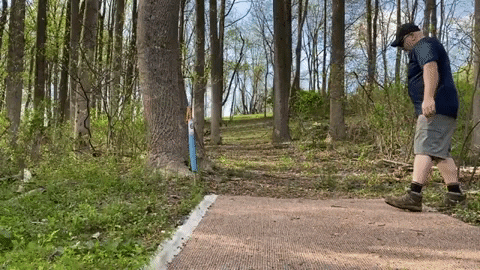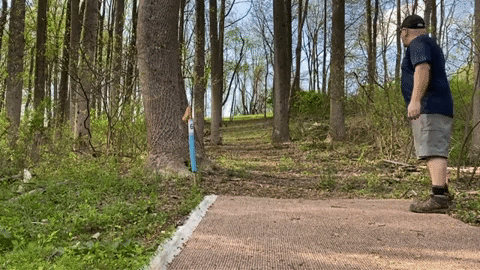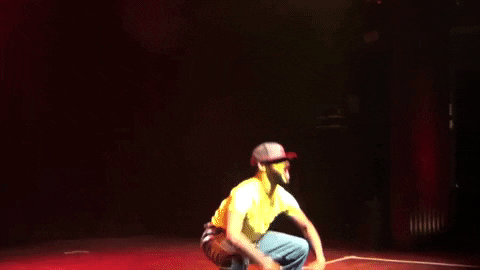hisdudeness47
Birdie Member
What sort of "counting rhythms" have worked for you when breaking down the swing?
Not sure how best to explain this. I tend to have a rhythm-oriented mind and I often try to break a swing down to its core components and treating them as beats in a rhythm when I'm trying to fix issues. For example, for a standstill backhand shot, if my weight shift and lag is all askew, I've been doing this lately at home with and without a disc in hand. Sometimes I'll even put a hammer/dumbbell in one or both hands....
Setup: Get into standstill position with front foot positioned parallel to the back foot in a toe (back foot) to heel (front foot) stagger. I pretend there's a line connecting my rear toe to my front heel. That line is my target line, essentially.
Once ready I will load all my weight into the front foot, feel the weight of my arm dangling (pendulum style) and then the count begins. Not even thinking about my upper body. It naturally moves during the count.
aaaand
Beat 1. Deweight front foot while lifting heel (heavy arm naturally starts penduluming backwards. Again, zero cognizant thought of what the arm is doing. Weight naturally shifts towards rear toe/instep.)
Beat 2. Bring all that weight I just removed back to the front foot by "crushing the can" with the front heel. Sink into it. Arm is still penduluming backwards from Beat 1 on Beat 2.
Beat 3. Swing around the brace formed in Beat 2. The forward pendulum motion doesnt begin until the 3rd beat. This is essential.
That's it. 1, 2, 3. Feels natural, feels powerful, and it keeps me in rhythm by not turning the shoulders too early. Essentially the arm is penduluming backwards until the 2.5 "half-beat". The forward trigger is right on 3. I hope this makes sense. It's harder to implement when actually throwing the disc but this is a sensation that I'm trying to build my muscle memory around since I have some bad tendencies (not fully shifting weight, opening too early, etc).
So, several questions... Is this above standstill 1,2,3 rhythm an appropriate way to think about the swing? Obviously the actual swing is less regimented but you can feel the rhythm through the specific beats. What other "rhythms" have worked for you, whether they be for one-steps, three-steps, four-steps, five-steps, forehand, putting, etc. I feel like there is a natural repeatable rhythm for every motion in the game, I just gotta find them... It's tough because the human brain can really only focus on one thing at a time and there's so many different things and body parts to focus on. In my example, by breaking it down I'm only thinking about where my weight is and adding beats to those weighting/deweighting motions and the forward, gravity-assisted pendulum, it really helps me feel the leverage and the hit at the end of the rainbow that's so difficult to reach.
Others may not think about the motions this way and that's totally fine! This question is geared towards the nutjobs like me who do. Would love to hear some other examples.
Thanks!
Not sure how best to explain this. I tend to have a rhythm-oriented mind and I often try to break a swing down to its core components and treating them as beats in a rhythm when I'm trying to fix issues. For example, for a standstill backhand shot, if my weight shift and lag is all askew, I've been doing this lately at home with and without a disc in hand. Sometimes I'll even put a hammer/dumbbell in one or both hands....
Setup: Get into standstill position with front foot positioned parallel to the back foot in a toe (back foot) to heel (front foot) stagger. I pretend there's a line connecting my rear toe to my front heel. That line is my target line, essentially.
Once ready I will load all my weight into the front foot, feel the weight of my arm dangling (pendulum style) and then the count begins. Not even thinking about my upper body. It naturally moves during the count.
aaaand
Beat 1. Deweight front foot while lifting heel (heavy arm naturally starts penduluming backwards. Again, zero cognizant thought of what the arm is doing. Weight naturally shifts towards rear toe/instep.)
Beat 2. Bring all that weight I just removed back to the front foot by "crushing the can" with the front heel. Sink into it. Arm is still penduluming backwards from Beat 1 on Beat 2.
Beat 3. Swing around the brace formed in Beat 2. The forward pendulum motion doesnt begin until the 3rd beat. This is essential.
That's it. 1, 2, 3. Feels natural, feels powerful, and it keeps me in rhythm by not turning the shoulders too early. Essentially the arm is penduluming backwards until the 2.5 "half-beat". The forward trigger is right on 3. I hope this makes sense. It's harder to implement when actually throwing the disc but this is a sensation that I'm trying to build my muscle memory around since I have some bad tendencies (not fully shifting weight, opening too early, etc).
So, several questions... Is this above standstill 1,2,3 rhythm an appropriate way to think about the swing? Obviously the actual swing is less regimented but you can feel the rhythm through the specific beats. What other "rhythms" have worked for you, whether they be for one-steps, three-steps, four-steps, five-steps, forehand, putting, etc. I feel like there is a natural repeatable rhythm for every motion in the game, I just gotta find them... It's tough because the human brain can really only focus on one thing at a time and there's so many different things and body parts to focus on. In my example, by breaking it down I'm only thinking about where my weight is and adding beats to those weighting/deweighting motions and the forward, gravity-assisted pendulum, it really helps me feel the leverage and the hit at the end of the rainbow that's so difficult to reach.
Others may not think about the motions this way and that's totally fine! This question is geared towards the nutjobs like me who do. Would love to hear some other examples.
Thanks!
Last edited:


